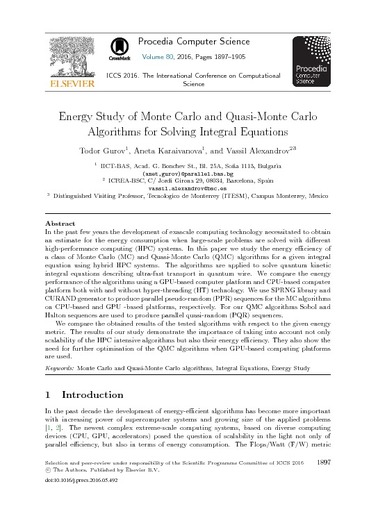| dc.creator | Diego Alberto Oliva Navarro | |
| dc.date | 2016 | |
| dc.date.accessioned | 2018-10-18T15:34:05Z | |
| dc.date.available | 2018-10-18T15:34:05Z | |
| dc.identifier.issn | 16875265 | |
| dc.identifier.doi | 10.1155/2016/3629174 | |
| dc.identifier.uri | http://hdl.handle.net/11285/630262 | |
| dc.description | In several machine vision problems, a relevant issue is the estimation of homographies between two different perspectives that hold an extensive set of abnormal data. A method to find such estimation is the random sampling consensus (RANSAC); in this, the goal is to maximize the number of matching points given a permissible error (Pe), according to a candidate model. However, those objectives are in conflict: a low Pe value increases the accuracy of the model but degrades its generalization ability that refers to the number of matching points that tolerate noisy data, whereas a high Pe value improves the noise tolerance of the model but adversely drives the process to false detections. This work considers the estimation process as a multiobjective optimization problem that seeks to maximize the number of matching points whereas Pe is simultaneously minimized. In order to solve the multiobjective formulation, two different evolutionary algorithms have been explored: the Nondominated Sorting Genetic Algorithm II (NSGA-II) and the Nondominated Sorting Differential Evolution (NSDE). Results considering acknowledged quality measures among original and transformed images over a well-known image benchmark show superior performance of the proposal than Random Sample Consensus algorithm. © 2016 Valentín Osuna-Enciso et al. | |
| dc.language | eng | |
| dc.publisher | Hindawi Publishing Corporation | |
| dc.relation | https://www.scopus.com/inward/record.uri?eid=2-s2.0-84956912023&doi=10.1155%2f2016%2f3629174&partnerID=40&md5=7c4801a17f63a49eb49a3b1048534d3a | |
| dc.relation | Investigadores | |
| dc.relation | Estudiantes | |
| dc.rights | info:eu-repo/semantics/openAccess | |
| dc.rights.uri | http://creativecommons.org/licenses/by-nc-nd/4.0 | |
| dc.source | Computational Intelligence and Neuroscience | |
| dc.subject | Benchmarking | |
| dc.subject | Computer vision | |
| dc.subject | Digital storage | |
| dc.subject | Evolutionary algorithms | |
| dc.subject | Genetic algorithms | |
| dc.subject | Multiobjective optimization | |
| dc.subject | Optimization | |
| dc.subject | Sorting | |
| dc.subject | Differential Evolution | |
| dc.subject | Generalization ability | |
| dc.subject | Homography estimations | |
| dc.subject | Multi-objective formulation | |
| dc.subject | Multi-objective optimization problem | |
| dc.subject | Multiobjective approach | |
| dc.subject | Non dominated sorting genetic algorithm ii (NSGA II) | |
| dc.subject | Random sample consensus | |
| dc.subject | Image matching | |
| dc.subject | algorithm | |
| dc.subject | artificial intelligence | |
| dc.subject | automated pattern recognition | |
| dc.subject | computer simulation | |
| dc.subject | decision support system | |
| dc.subject | human | |
| dc.subject | procedures | |
| dc.subject | theoretical model | |
| dc.subject | Algorithms | |
| dc.subject | Artificial Intelligence | |
| dc.subject | Computer Simulation | |
| dc.subject | Decision Support Techniques | |
| dc.subject | Humans | |
| dc.subject | Models, Theoretical | |
| dc.subject | Pattern Recognition, Automated | |
| dc.subject.classification | 7 INGENIERÍA Y TECNOLOGÍA | |
| dc.title | A multiobjective approach to homography estimation | |
| dc.type | Artículo | |
| dc.identifier.volume | 2016 | |
| refterms.dateFOA | 2018-10-18T15:34:05Z | |




